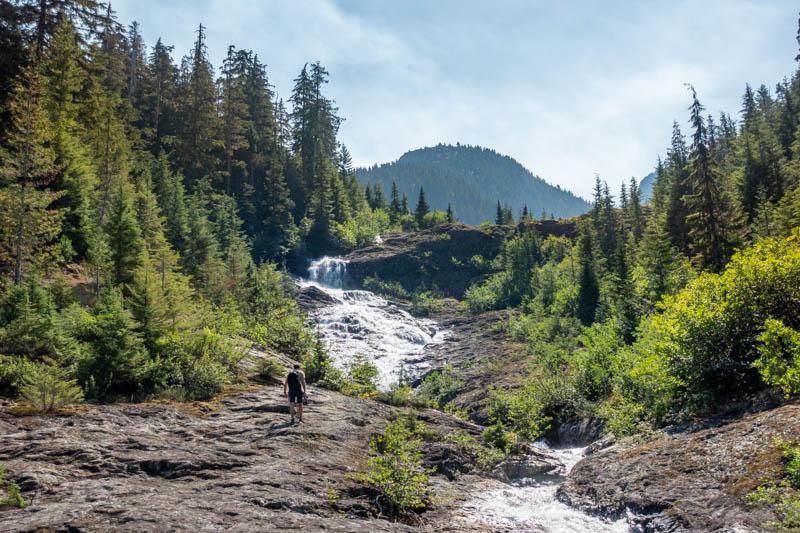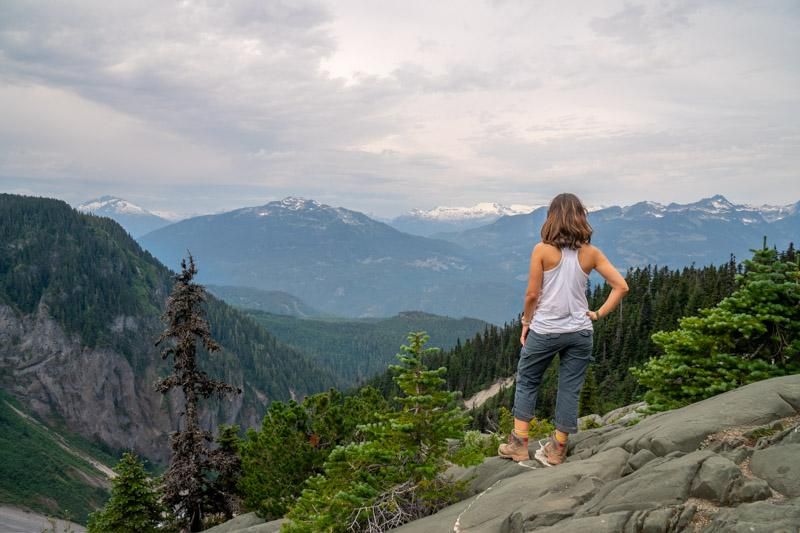When preparing for a hike or a camping trip in a bear country, it's crucial to plan accordingly and know what to do in case of an emergency.

Bears are fascinating creatures; however, they are best viewed from a safe distance. Black bears and grizzlies are two types that you need to look out for when backpacking across the country.
Although a bear sighting is incredibly rare, it is essential to know how to stay safe when you are camping in a bear country.
Planning Your Trip

Firstly, it is crucial to plan your trip correctly and research which bear-related regulations are in place at the destination. The type of regulations can differ significantly depending on the state and county. In some parks, the use of bear canisters is mandatory, whereas others do not require it.
You should also be sure to find out if bear poles or lockers will be installed on your camping sites.
How to avoid bears – the preferred method, for obvious reasons
Once you find yourself in an area that may have grizzly bears or black bears, there are a few steps that you can take to avoid them. The first thing to remember is that bears tend to be most active during dawn or dusk. Therefore, you should avoid hiking at these times, if possible. One of the biggest parts of proper bear safety when camping is avoidance.

Additionally, hiking in groups is recommended since bears typically don’t attack groups of 4 or more people.
Once you start hiking, you should continually make some noise across your route. In a group, you can loudly talk or sing with one another. However, it would help if you did not make any noises, which are whistles or screams. Additionally, you may have heard of “bear bells,” which claim that they can ward off bears. However, in reality, these devices are not powerful enough for a bear to hear.
Don’t go unprepared into a bear country

One essential item to carry around with you during a hike is a bear spray.
This spray can be an effective form of defence against an advancing bear. It works best at 12-30 feet, and it can empty within around 9 seconds.
You should make sure that it is kept somewhere easy to access in a holster since it will need to be used as quickly as possible. Keep in mind that the wind may blow it back in your face, which is not only a bad time but very dangerous.
Keeping Bears Away from Camp
There are measures you can take to avoid attracting bears to your camp. The first thing to do is never to leave any food unattended. It is essential to use the correct food storage methods that have been suggested by the camp.
Also, all odours should be kept away from the tent; you should follow the no-trace guidelines for throwing away waste.
What to Do in Bear Encounters
In general, if you do happen to encounter a bear, they will flee. Both grizzly bears and black bears are afraid of humans and may retreat if they see or smell them. However, their behaviour can be unpredictable, and it can vary based on several different conditions. It can also be tricky to differentiate grizzly bears from black bears.

Black bears live across the country, which means it is more likely that you will encounter them. They lack a shoulder hump, and you can identify their face as having a straight profile. On the other hand, Grizzly bears are found primarily in Alaska and Canada. In the USA, they mainly only live in Wyoming, Montana, and Idaho.
You can recognise a grizzly from their noticeable shoulder hump and a concave face profile.
General Tips to Follow in the Event of an Encounter
Even though ideal bear safety when camping means that you should avoid an encounter, it may happen regardless. There are some basic guidelines that you can follow if you spot either bear.

Firstly, even though it may be tempting to get a closer look or a photo, you should never directly approach a bear in any situation.
As a group, you should stand together closely. You should also change your route if possible to give the bear a wide berth. Once you spot a bear, you should ensure that your bear spray is out and ready to be used.
Tips for Black Bear Encounters

If you happen to encounter a black bear that is coming in your direction, then you should try and make yourself look as large as possible by waving your arms. Additionally, it would help if you tried to make as much noise as possible.
If you face a black bear attack, then you should never play dead. Instead, it would be best if you fought back by any means necessary.
Tips for Grizzly Bear Encounters

You may notice a Grizzly standing up to take a full look at you. If a bear does this, then you should remain calm and calmly look back at them without giving direct eye contact. The bears also tend to engage in bluff charges, which can be recognised by ears being up followed by huffing and puffing. In this situation, it is best to stand your ground calmly.
If the Grizzly’s ears are back, then this is a direct attack. It would be best if you used your bear spray when it is closer to 30 feet. If your spray fails or you don’t have it, then you should play dead.
You can lie flat on your stomach and cover your neck with your hands.
Closing Thoughts
Bear encounters are rare, but you should always be prepared for one when camping in bear country. By following these tips and guidelines, you will be able to stay safe and have an enjoyable camping experience wherever you are in the country.
About the Author
She is a travel content writer in Bangalore, India and publishes articles about vacation ideas on her website.

